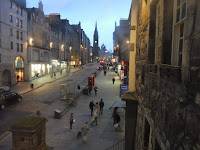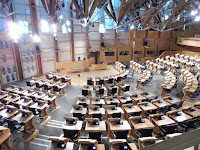Greyfriars is on of Edinburgh's most famous churches and was opened for worship in 1620, and in 1638 the National Covenant was signed here, which affirmed the independence of the Scottish Church.
Many of the headstones form part of the rear walls of adjoining properties, and the remains of the Flodden wall can be found here also. This is one of the few remaining fragments of the old city wall built in the early 16th century as protection against a feared British invasion.
Many famous Scots are buried within the kirkyard, but probably the most notorious is Greyfriars Bobby, a wee Skye terrier, who from 1858 to 1872, maintained vigil over the grave of his master, an Edinburgh police officer. His story was later told in a novel by Eleanor Atkinson and a statue can be found outside the church yard, although his grave is just inside the entrance.
1 year ago




















































